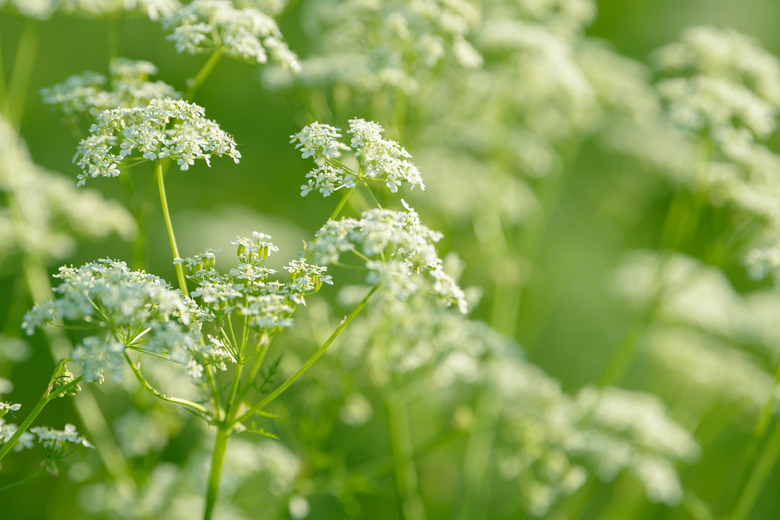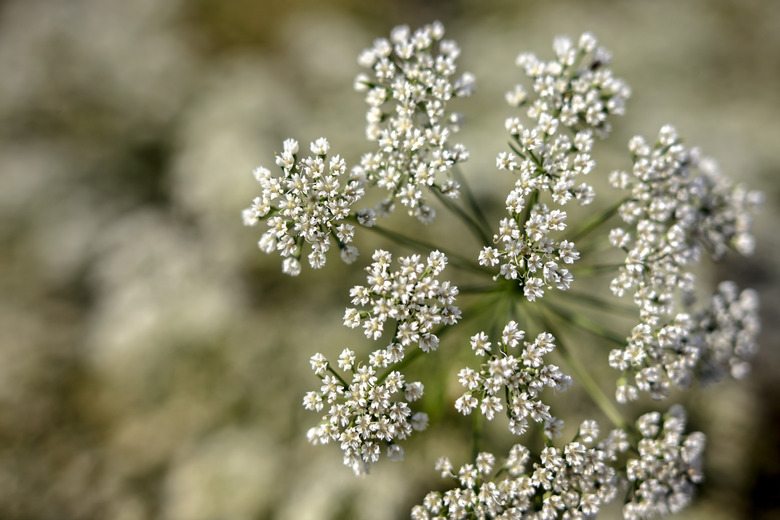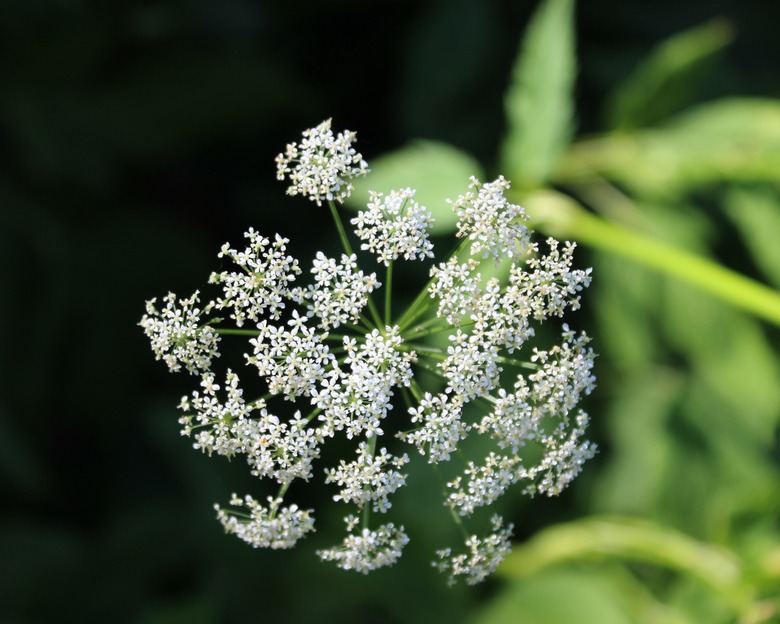How To Grow Anise
We may receive a commission on purchases made from links.
Anise (Pimpinella anisum) is a dainty annual herb that grows to 2 feet tall. It produces fat umbels of tiny white flowers as well as loose leaves. The oblong seeds produced by the flowers are edible and delicious and are used to flavor foods. They have a taste that resembles licorice. They are also used to make an oil that is widely implemented for flavoring.
Best Uses for Anise
Best Uses for Anise
Anise is a popular herb, and it fits very well in a vegetable or herb garden. It is also decorative. The plant is attractive, with its profusion of white blossoms and lacy upper leaves, making it a bushy ornamental that works well in a cottage garden. It can also be grown in a container.
Most gardeners grow anise for its tasty seeds that add a licorice flavor to soups and baked goods as well as spicy dishes like curry. The seeds can be used whole, or they can be ground up. Anise leaves offer the same licorice taste that the seeds do but are a bit milder. They can be chopped for salads. It is also possible to eat the anise roots. Anise is even used for medicinal purposes to treat stomach aches or similar digestive issues.
How to Grow Anise
How to Grow Anise
-
Common Name: Anise or aniseed
-
Botanical Name: Pimpinella anisum
-
When to Plant: Plant after all danger of frost has passed when the soil is at least 60 degrees Fahrenheit
-
USDA Zones: Grown as an annual
-
Sun Exposure: Full sun
-
Soil Type: Light, fertile, sandy soil
-
When it's in Trouble: Poor drainage or overwatering causes discolored leaves and can kill the plant
-
When it's Thriving: Produces bushy herbs with large, umbrella-shaped umbels of white flowers
Starting Anise From Seed
Anise grows rapidly from anise seed in warm soil, and this is the most common method of starting the herb. It requires a lengthy growing season of at least 120 frost-free days without spikes or dramatic dips in temperature.
These are not cold-hardy plants, so you shouldn't put them outside until after the last spring frost has passed. The soil temperature is important to germination and should be 60 degrees Fahrenheit or higher. If you are sowing outside, sow the seeds 1/4 to 1/2 inch deep. Put in a few seeds every 4 inches. After six weeks, thin them to one plant every 4 to 10 inches. If you are planting several rows of anise, space the rows 18 to 30 inches apart.
If your growing season (from the last spring frost through the first fall frost) is short, start seeds indoors in biodegradable peat pots up to eight weeks before the average final frost date for your area. Keep the pots in a warm environment between 60 and 72 degrees in order to facilitate germination.
Anise is native to Egypt and warm regions of southern Europe. Given that history, it is no surprise that anise likes the sun and needs plenty of sunlight — at least six hours a day. Make sure the site soil is well-draining and rich in organic matter. Work in organic compost before planting.
Starting Anise From a Seedling
You may not find anise seedlings for sale in local garden stores or even online. If you do, the process for transplanting is the same as for transplanting seedlings from indoor peat pots.
Since anise doesn't like to have its roots disturbed once it germinates, it is best to use biodegradable pots when you start seeds indoors. After the last spring frost, it's time to move those young seedlings outside. Space the transplants some 4 inches apart, making sure to plant them at the same depth as they are in their containers. Simply place each small pot in the soil at the correct depth and then water well.
In What Zone Does Anise Grow Best?
In What Zone Does Anise Grow Best?
Anise is a warm-season annual, but it doesn't like very hot weather or temperature swings. That means that it will grow best in U.S. Department of Agriculture plant hardiness zones 4 through 9. In hotter zones, you might grow anise in a spot that gets afternoon shade or else in a container that you can move to shade when appropriate.
When Should You Plant Anise?
When Should You Plant Anise?
Anise is a warm-weather plant and must be planted in spring since it needs about 120 growing days to mature. It grows best in evenly temperate climates and doesn't like extremes of heat and cold or dramatic temperature shifts. This delicate herb cannot survive a hard frost.
That means you should never plant anise while there is still a chance of a hard frost or freeze. Wait to sow seeds or transplant seedlings outdoors in spring until the possibility of a temperature dive has passed. In some regions, the number of days between the last spring frost and the first fall frost may not meet or exceed the 120 days anise requires. In those areas, gardeners should start the plants indoors in warm temperatures and set the seedlings outside when the cold weather has definitely passed.
Soil, Sunlight and Water Recommendations for Anise
Soil, Sunlight and Water Recommendations for Anise
The herb anise needs well-draining soil. If the soil is heavy clay or has poor drainage, the anise plant will suffer, the leaves will discolor and the plant may die. Rather, anise needs a sandy loam that is light but fertile with a high level of organic content. Ideally, the soil should be slightly acidic with a pH of 5.5 to 6.5. A frost-free season of at least 120 days is required.
Anise needs sunlight to grow — at least six hours a day of direct sun. It also requires evenly moist soil since fluctuating soil moisture levels are not good for the plant. That means regular irrigation. Young seedlings require watering two or three times a week. After the plants are taller than 6 to 8 inches, you can reduce watering to once a week.
How to Propagate Anise
How to Propagate Anise
If you buy anise seeds the first year to get started, you can avoid that in future years by saving the seeds. Simply retain sufficient seeds at harvest to provide for next year's crop. Let them dry out before planting.
How to Winterize Anise
How to Winterize Anise
Anise is an annual and will not survive a cold winter. That means it is unnecessary to winterize anise. You can store anise seeds in a dry spot for the winter, however, and plant them again in spring.
How to Harvest Anise
How to Harvest Anise
The general rule is that anise is ready to harvest when the plants have gone to seed and the seeds begin to turn gray and loosen easily from the plant. This is usually in August or September, and you can get a general idea by counting 120 days from the day the seeds are sown.
It isn't difficult to get the ripe seeds from the anise plants, but harvesting is complicated by the fact that the umbels ripen progressively, with some seeds ripening earlier within each umbel and some ripening later. Commercial anise growers often pull out the plants early and stack them in a cone shape with the seed heads at the center. This allows them to continue to ripen. When the seeds mature, they separate easily from the plant.
If you only have a few plants, it's easier to cut off the top of the plants with a handheld garden pruner. Then, tie the anise plants in bundles and store them in a warm, well-ventilated area that gets indirect sun. Allow the seeds to dry out. Once that happens, rub the flowerhead between your hands to separate the seeds. Alternatively, attach paper bags to the tops of the anise flowers to trap the seeds as they dry out and drop. After harvesting, store the seeds in a cool, dark place in an airtight container.
Common Pests and Other Problems for Anise
Common Pests and Other Problems for Anise
Anise is an annual herb that isn't regularly attacked by pests. However, a few common pests might turn up on your anise plants. These are not anise-specific but can show up on various flowers and herbs in your garden, including anise.
Aphids are bugs that have soft, pear-shaped bodies, which might make them cute if you could see them better. Aphids are very small, usually green or yellow, and are most often spotted when a large group of them crowds together on the underside of anise leaves and sometimes on the stems. One or two aphids are not likely to inflict much damage, but an infestation can distort leaves and turn them yellow.
Aphids have special sucking mouth parts that they use to eat the plant juices. They then excrete a liquid product known as honeydew onto the plant. This attracts other bugs, like ants, and encourages the growth of mold. This is all the more reason to take action. To get rid of aphids, use a powerful jet of water from the garden hose.
If you see holes chomped in your anise foliage, your anise may be under attack by armyworms. They are the larval stage of moths that lay egg clusters — up to 150 — on the plant leaves. The resulting larvae eat leaves and grasses. Get rid of these pests by taking a trip to the garden store for a box of parasitic wasps, flies or ground beetles, which are natural enemies of armyworms. You could also use pheromone traps to attract and catch the moths before they lay eggs.
If your anise plants are chopped off at the soil line, your plants may be attacked by cutworms. They live in the soil, overwintering there to attack new plants in the spring. Your best defense is to keep a clean garden by removing all plant residue from the soil after the harvest. You can also spread diatomaceous earth around the base of the plants.
Common Diseases for Anise
Common Diseases for Anise
Two possible anise diseases are both termed "mildew," but they are not related.
Downy mildew is caused by parasitic organisms that are related to algae. This mildew needs water to survive and spread. It causes yellow spots on the upper surfaces of young, tender leaves and a white, fluffy growth on the underside. The disease appears when your anise leaves have been wet for a prolonged period. To manage downy mildew, water the plants in the morning and not the evening. Always water at the base of the plants and space them to allow air flow between them.
Powdery mildew is caused by a true fungus and causes a type of powdery growth on anise leaves. A serious case can cause misshapen flowers too. To fight powdery mildew, avoid overfertilizing the plant and observe proper spacing to promote airflow around the plants.


